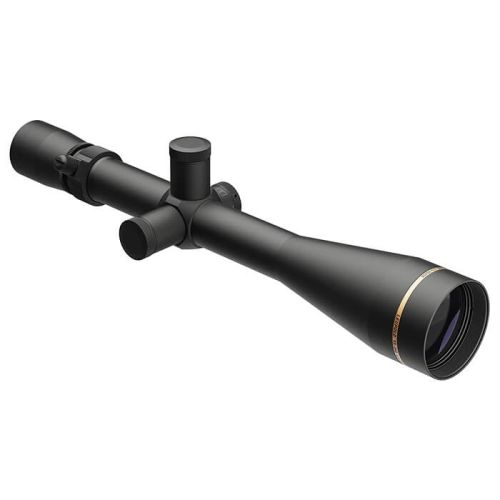

Leupold Competition VX-3HD 6.5-20X50 Side Focus CDS-T riflescope features a precision design that supports accurate aiming for mid to long-range shooting. With its advanced optical system, this scope offers exceptional light transmission for clear visibility during varied lighting conditions. The front parallax focus ring allows for precise adjustments from infinity to 10 meters, making it versatile for both airguns and rimfire rifles. Ergonomic controls ensure comfortable handling, even when wearing gloves, enhancing performance on the firing line.
Equipped with a Custom Dial System (CDS-T), this riflescope provides ¼-MOA adjustments across its entire range, enabling shooters to tailor their settings based on ballistic data and environmental factors. Constructed to withstand tough conditions, it is waterproof, fogproof, and shockproof, ensuring reliable performance in the field. Proudly made in the USA, the VX-3HD is backed by a lifetime warranty, ensuring it remains a trusted companion for all your shooting endeavors.
Key Features:
- PREMIUM OPTICS for superior light transmission in low-light conditions.
- ADJUSTABLE PARALLAX for precise focus adjustments from infinity to 10 meters.
- ERGONOMIC CONTROLS designed for easy operation, even with gloves.
- CUSTOM DIAL SYSTEM (CDS-T) allows for ¼-MOA adjustments for tailored performance.
- WATERPROOF, FOGPROOF, & SHOCKPROOF construction ensures durability in any environment.
- FINE DUPLEX RETICLE provides clear aiming points without distractions.
- LIGHTWEIGHT DESIGN (20.8 oz) enhances portability and ease of use.
- USA MADE with a lifetime warranty for trusted quality and reliability.
Technical Specifications
| Magnification Type | 6.5x-20 |
|---|---|
| Objective Lens Size | 50mm |
| Eye Relief | 3.6" - 4.4" |
| Field of View @ 100 Yards | 5.5 ft. - 14.3 ft. |
| Tube Diameter | 30mm |
| Turret Type | Tactical MOA |
| Turret Click Value | .250 MOA |
| Reticle Focal Plane | 2nd Focal Plane |
| Exterior Finish | Matte Black |
| Weight | 20.8 oz |
| Length | 14.37" |
| Max Elevation Adjustment | 65 MOA |
| Max Windage Adjustment | 55 MOA |
| Warranty | Leupold Lifetime Guarantee |
What's in the Box?
- Leupold Competition VX-3HD 6.5-20X50 Side Focus CDS-T Riflescope
- Lens covers
- Instruction manual
Customer Reviews
"The clarity and precision of this scope are unmatched. Perfect for competition shooting!"
"I love the ergonomics and how easy it is to make adjustments on the fly."
FAQ
How does the VX-3HD perform in low light? The Elite Optical System ensures excellent light transmission, making it suitable for dawn and dusk conditions. Users report clear visibility even in challenging lighting.
Is the scope durable for outdoor use? Yes, the VX-3HD is built to be waterproof, fogproof, and shockproof, ensuring it withstands the rigors of outdoor environments without compromising performance.
What makes the Custom Dial System beneficial? The CDS allows shooters to customize their turret for specific ballistics, enhancing accuracy and adaptability in various shooting conditions.
Similar Models
Looking for more precision optics? Explore our extensive Leupold lineup, including the Leupold VX-Freedom series for versatile performance and the Leupold Mark 5HD for enhanced long-range capabilities. Discover our full collection tailored for your shooting needs.
You May Also Like
Here’s some of our most similar products people are buying. Click to discover trending style.








